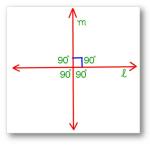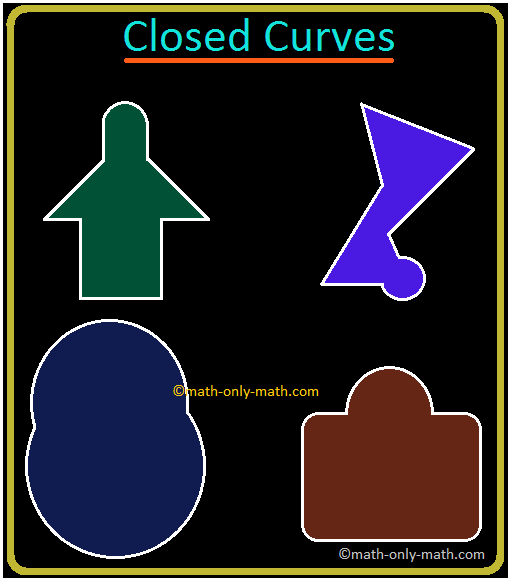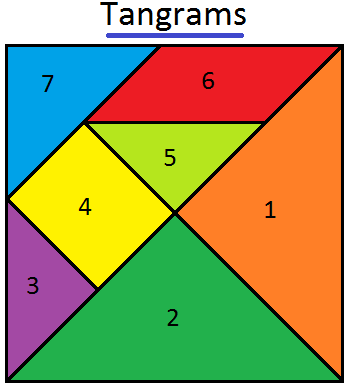Compound Interest when Interest is Compounded Quarterly
We will learn how to use the formula for calculating the compound interest when interest is compounded quarterly.
Computation of compound interest by using growing principal becomes lengthy and complicated when the period is long. If the rate of interest is annual and the interest is compounded quarterly (i.e., 3 months or, 4 times in a year) then the number of years (n) is 4 times (i.e., made 4n) and the rate of annual interest (r) is one-fourth (i.e., made \(\frac{r}{4}\)). In such cases we use the following formula for compound interest when the interest is calculated quarterly.
If the principal = P, rate of interest per unit time = \(\frac{r}{4}\)%, number of units of time = 4n, the amount = A and the compound interest = CI
Then
A = P(1 + \(\frac{\frac{r}{4}}{100}\))\(^{4n}\)
Here, the rate percent is divided by 4 and the number of
years is multiplied by 4.
Therefore, CI = A - P = P{(1 + \(\frac{\frac{r}{4}}{100}\))\(^{4n}\) - 1}
Note:
A = P(1 + \(\frac{\frac{r}{4}}{100}\))\(^{4n}\) is the relation among the four quantities P, r, n and A.
Given any three of these, the fourth can be found from this formula.
CI = A - P = P{(1 + \(\frac{\frac{r}{4}}{100}\))\(^{4n}\) - 1} is the relation among the four quantities P, r, n and CI.
Given any three of these, the fourth can be found from this formula.
Word problems on compound interest when interest is compounded quarterly:
1. Find the compound interest when $1,25,000 is invested for 9 months at 8% per annum, compounded quarterly.
Solution:
Here, P = principal amount (the initial amount) = $ 1,25,000
Rate of interest (r) = 8 % per annum
Number of years the amount is deposited or borrowed for (n) = \(\frac{9}{12}\) year = \(\frac{3}{4}\) year.
Therefore,
The amount of money accumulated after n years (A) = P(1 + \(\frac{\frac{r}{4}}{100}\))\(^{4n}\)
= $ 1,25,000 (1 + \(\frac{\frac{8}{4}}{100}\))\(^{4 ∙ \frac{3}{4}}\)
= $ 1,25,000 (1 + \(\frac{2}{100}\))\(^{3}\)
= $ 1,25,000 (1 + \(\frac{1}{50}\))\(^{3}\)
= $ 1,25,000 × (\(\frac{51}{50}\))\(^{3}\)
= $ 1,25,000 × \(\frac{51}{50}\) × \(\frac{51}{50}\) × \(\frac{51}{50}\)
= $ 1,32,651
Therefore, compound interest $ (1,32,651 - 1,25,000) = $ 7,651.
2. Find the compound interest on $10,000 if Ron took loan from a bank for 1 year at 8 % per annum, compounded quarterly.
Solution:
Here, P = principal amount (the initial amount) = $ 10,000
Rate of interest (r) = 8 % per annum
Number of years the amount is deposited or borrowed for (n) = 1 year
Using the compound interest when interest is compounded quarterly formula, we have that
A = P(1 + \(\frac{\frac{r}{4}}{100}\))\(^{4n}\)
= $ 10,000 (1 + \(\frac{\frac{8}{4}}{100}\))\(^{4 ∙ 1}\)
= $ 10,000 (1 + \(\frac{2}{100}\))\(^{4}\)
= $ 10,000 (1 + \(\frac{1}{50}\))\(^{4}\)
= $ 10,000 × (\(\frac{51}{50}\))\(^{4}\)
= $ 10,000 × \(\frac{51}{50}\) × \(\frac{51}{50}\) × \(\frac{51}{50}\) × \(\frac{51}{50}\)
= $ 10824.3216
= $ 10824.32 (Approx.)
Therefore, compound interest $ (10824.32 - $ 10,000) = $ 824.32
3. Find the amount and the compound interest on $ 1,00,000 compounded quarterly for 9 months at the rate of 4% per annum.
Solution:
Here, P = principal amount (the initial amount) = $ 1,00,000
Rate of interest (r) = 4 % per annum
Number of years the amount is deposited or borrowed for (n) = \(\frac{9}{12}\) year = \(\frac{3}{4}\) year.
Therefore,
The amount of money accumulated after n years (A) = P(1 + \(\frac{\frac{r}{4}}{100}\))\(^{4n}\)
= $ 1,00,000 (1 + \(\frac{\frac{4}{4}}{100}\))\(^{4 ∙ \frac{3}{4}}\)
= $ 1,00,000 (1 + \(\frac{1}{100}\))\(^{3}\)
= $ 1,00,000 × (\(\frac{101}{100}\))\(^{3}\)
= $ 1,00,000 × \(\frac{101}{100}\) × \(\frac{101}{100}\) × \(\frac{101}{100}\)
= $ 103030.10
Therefore, the required amount = $ 103030.10 and compound interest $ ($ 103030.10 - $ 1,00,000) = $ 3030.10
4. If $1,500.00 is invested at a compound interest rate 4.3% per annum compounded quarterly for 72 months, find the compound interest.
Solution:
Here, P = principal amount (the initial amount) = $1,500.00
Rate of interest (r) = 4.3 % per annum
Number of years the amount is deposited or borrowed for (n) = \(\frac{72}{12}\) years = 6 years.
A = amount of money accumulated after n years
Using the compound interest when interest is compounded quarterly formula, we have that
A = P(1 + \(\frac{\frac{r}{4}}{100}\))\(^{4n}\)
= $1,500.00 (1 + \(\frac{\frac{4.3}{4}}{100}\))\(^{4 ∙ 6}\)
= $1,500.00 (1 + \(\frac{1.075}{100}\))\(^{24}\)
= $1,500.00 × (1 + 0.01075)\(^{24}\)
= $1,500.00 × (1.01075)\(^{24}\)
= $ 1938.83682213
= $ 1938.84 (Approx.)
Therefore, the compound interest after 6 years is approximately $ (1,938.84 - 1,500.00) = $ 438.84.
● Compound Interest
Compound Interest with Growing Principal
Compound Interest with Periodic Deductions
Compound Interest by Using Formula
Compound Interest when Interest is Compounded Yearly
Compound Interest when Interest is Compounded Half-Yearly
Variable Rate of Compound Interest
Practice Test on Compound Interest
● Compound Interest - Worksheet
Worksheet on Compound Interest
Worksheet on Compound Interest with Growing Principal
Worksheet on Compound Interest with Periodic Deductions8th Grade Math Practice
From Compound Interest when Interest is Compounded Quarterly to HOME PAGE
Didn't find what you were looking for? Or want to know more information about Math Only Math. Use this Google Search to find what you need.
Recent Articles
-
Perpendicular Lines | What are Perpendicular Lines in Geometry?|Symbol
Apr 19, 24 02:46 AM
In perpendicular lines when two intersecting lines a and b are said to be perpendicular to each other if one of the angles formed by them is a right angle. In other words, Set Square Set Square If two… -
Fundamental Geometrical Concepts | Point | Line | Properties of Lines
Apr 19, 24 01:55 AM
The fundamental geometrical concepts depend on three basic concepts — point, line and plane. The terms cannot be precisely defined. However, the meanings of these terms are explained through examples. -
What is a Polygon? | Simple Closed Curve | Triangle | Quadrilateral
Apr 18, 24 02:15 AM
What is a polygon? A simple closed curve made of three or more line-segments is called a polygon. A polygon has at least three line-segments. -
Simple Closed Curves | Types of Closed Curves | Collection of Curves
Apr 18, 24 01:36 AM
In simple closed curves the shapes are closed by line-segments or by a curved line. Triangle, quadrilateral, circle, etc., are examples of closed curves. -
Tangrams Math | Traditional Chinese Geometrical Puzzle | Triangles
Apr 18, 24 12:31 AM
Tangram is a traditional Chinese geometrical puzzle with 7 pieces (1 parallelogram, 1 square and 5 triangles) that can be arranged to match any particular design. In the given figure, it consists of o…




